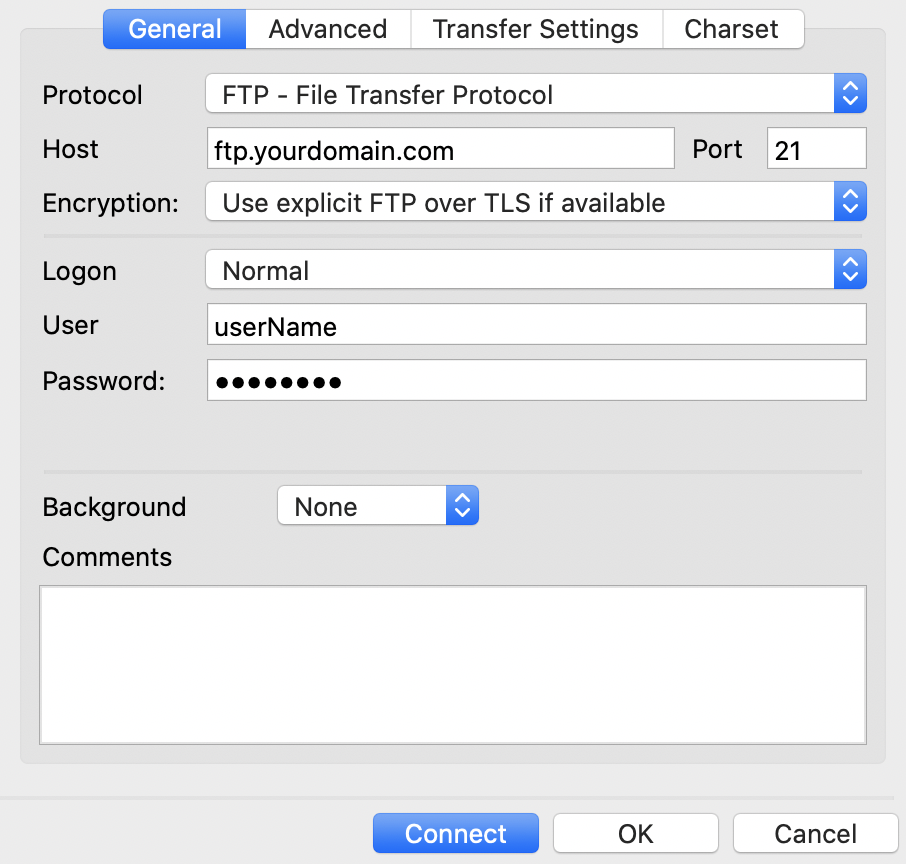

#How to set up ftp filezilla on mac pro
In passive mode, FileZilla/FileZilla Pro has no control over what port the server chooses for the data connection. If the remote server can’t open the data channel, the active mode FTP connection can’t transfer any data.īy default, FileZilla Pro uses passive mode for FTP and FTPS connections. The reason these differences are important is that some firewalls and routers won’t allow a remote server to initiate a connection to a computer on the local network. Sort of like the difference between having a pizza delivered (active mode) and going to pick it up yourself (passive mode). In passive mode, the local ma- chine opens the data channel using the IP address and port number with which the remote server replies to a successful connection request. In active mode, the remote server opens the data channel. The second channel – the data channel – is opened differently in active and passive modes.

It’s a little like ordering a pizza: You make a phone call or put in an order via a website, but the actual pizza arrives by car or scooter. One is used for commands and responses, the other for the actual data being transferred. Since many servers on the internet don’t support both transfer modes, it’s recommended that you configure both transfer modes on your end.įTP and FTPS connections use two different channels to a server at once. These ports are not mandatory, however, so it’s best to allow outgoing connections to arbitrary remote ports. Most normal FTP servers use port 21, SFTP servers use port 22 and FTPS servers (implicit mode) use port 990 by default.

If you want to connect to any server, you need to tell your firewall that FileZilla/FileZilla Pro should be allowed to open connections to other servers. The wizard will guide you through the necessary steps and can test your configuration. It is recommended to use the network configuration wizard.


 0 kommentar(er)
0 kommentar(er)
